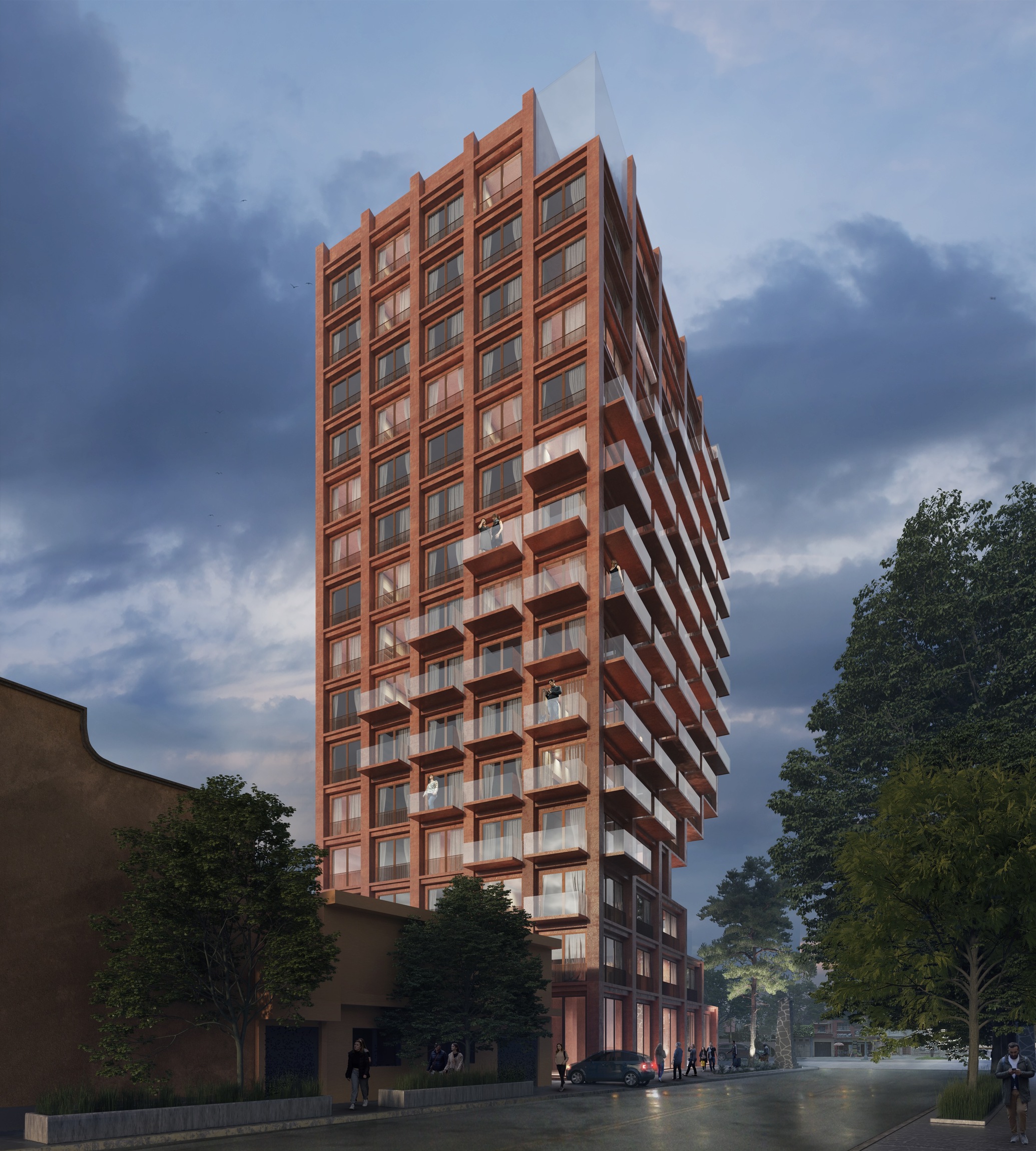
TREE TOWER
Tree Tower is located at a historically significant site—the former entrance to the Hacienda de Guadalupe, an estate that dates back to the presidency of Porfirio Díaz. In the 1960s, the land was transformed into a residential district, giving rise to what is now the Guadalupe Inn neighborhood. Tucked between two major arteries of Mexico City—Avenida Insurgentes and Avenida Revolución—this area has since become a quiet enclave, defined by leafy streets, neighborhood parks, single-family homes, small cafés, and local businesses.
In recent years, however, the skyline along Avenida Revolución has begun to shift. Changes in zoning and building regulations have catalyzed the emergence of mid-rise buildings ranging from 10 to 15 stories, subtly transforming the architectural character of the area.
Tree Tower responds to this moment of transition—not with nostalgia, nor rupture, but with synthesis.
Our proposal is rooted in a deep respect for context. The building draws inspiration from the materials, proportions, and rhythms of the original hacienda architecture, while embracing the evolving verticality and lifestyle demands of contemporary city living. In this way, the project becomes a bridge between past and future.
The façade is a visual dialogue: on one hand, it references the historical textures and warm tones of traditional construction in the area—its tectonics, colors, and repetitive symmetry. On the other, it projects forward, incorporating expansive terraces that wrap the building like a vertical garden, promoting outdoor living and a strong connection to nature—elements that define modern urban wellness. These terraces evolve and merge with reinterpretations of the French-style balconies once common in colonial and hacienda architecture, giving rise to a unique hybrid language that is both contemporary and rooted in place.
Tree Tower is not just a building—it is an urban gesture. It honors the neighborhood’s origins while offering a vision for its future, one where architecture becomes a vessel for memory, identity, and evolution.
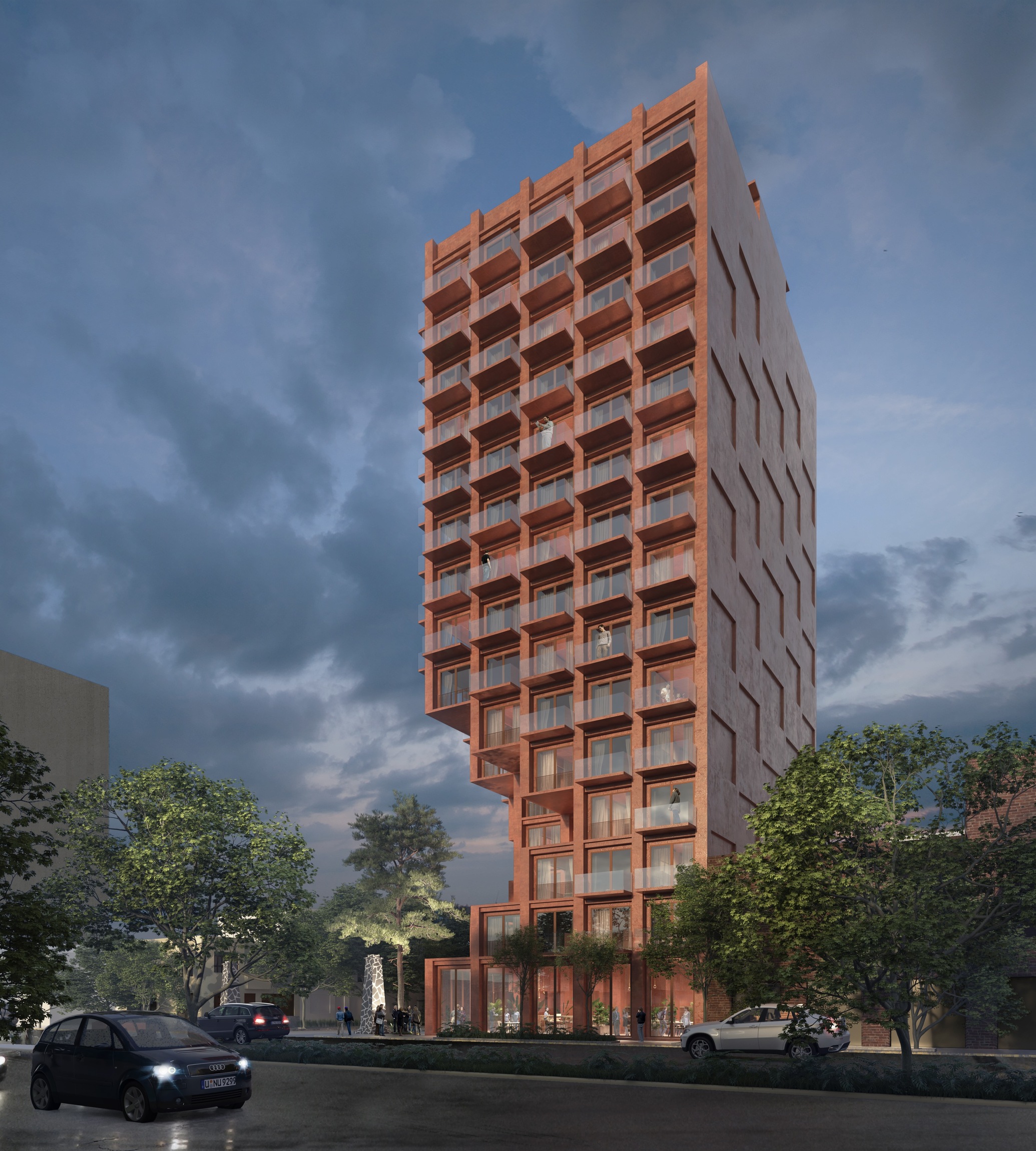
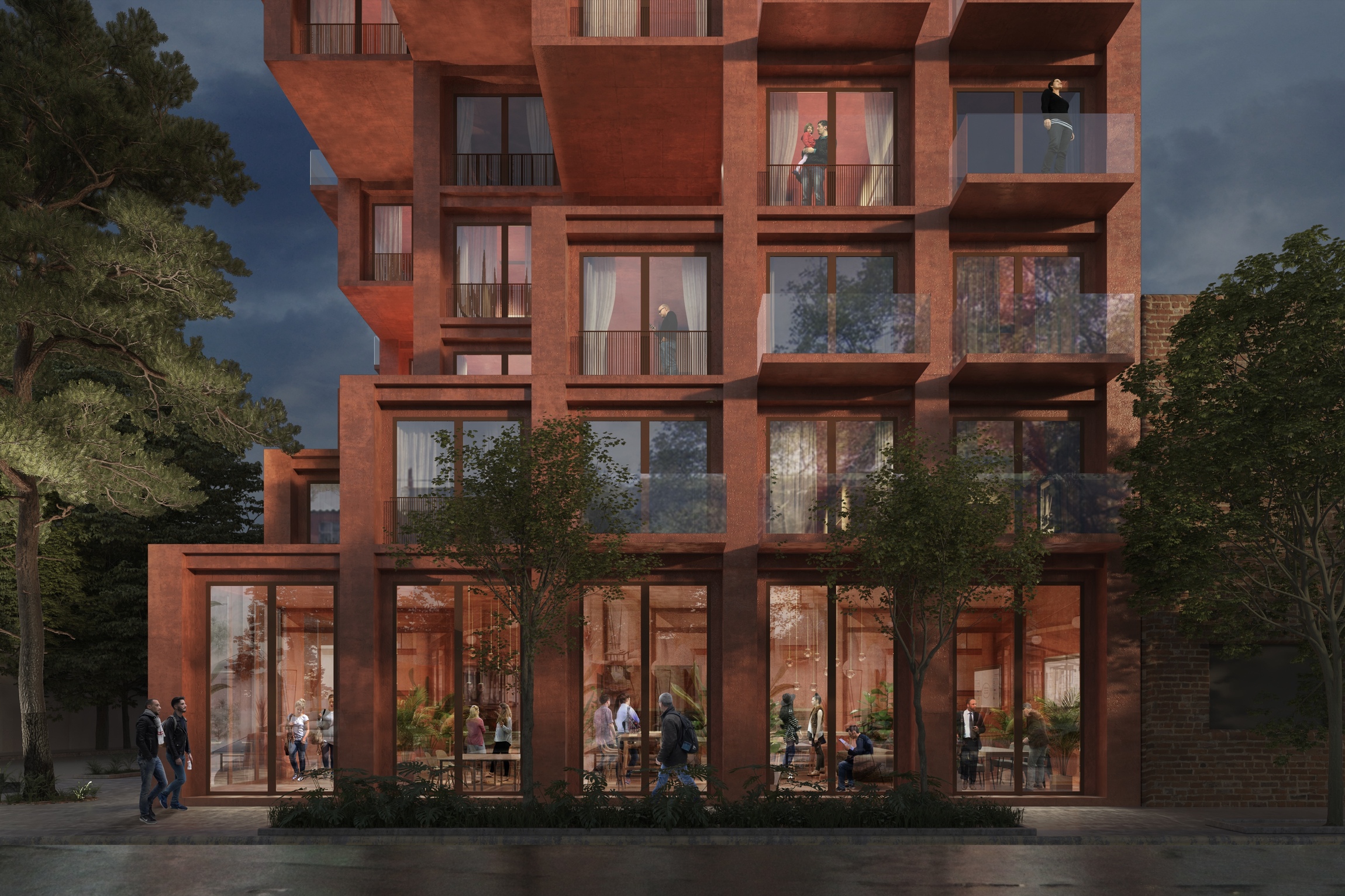
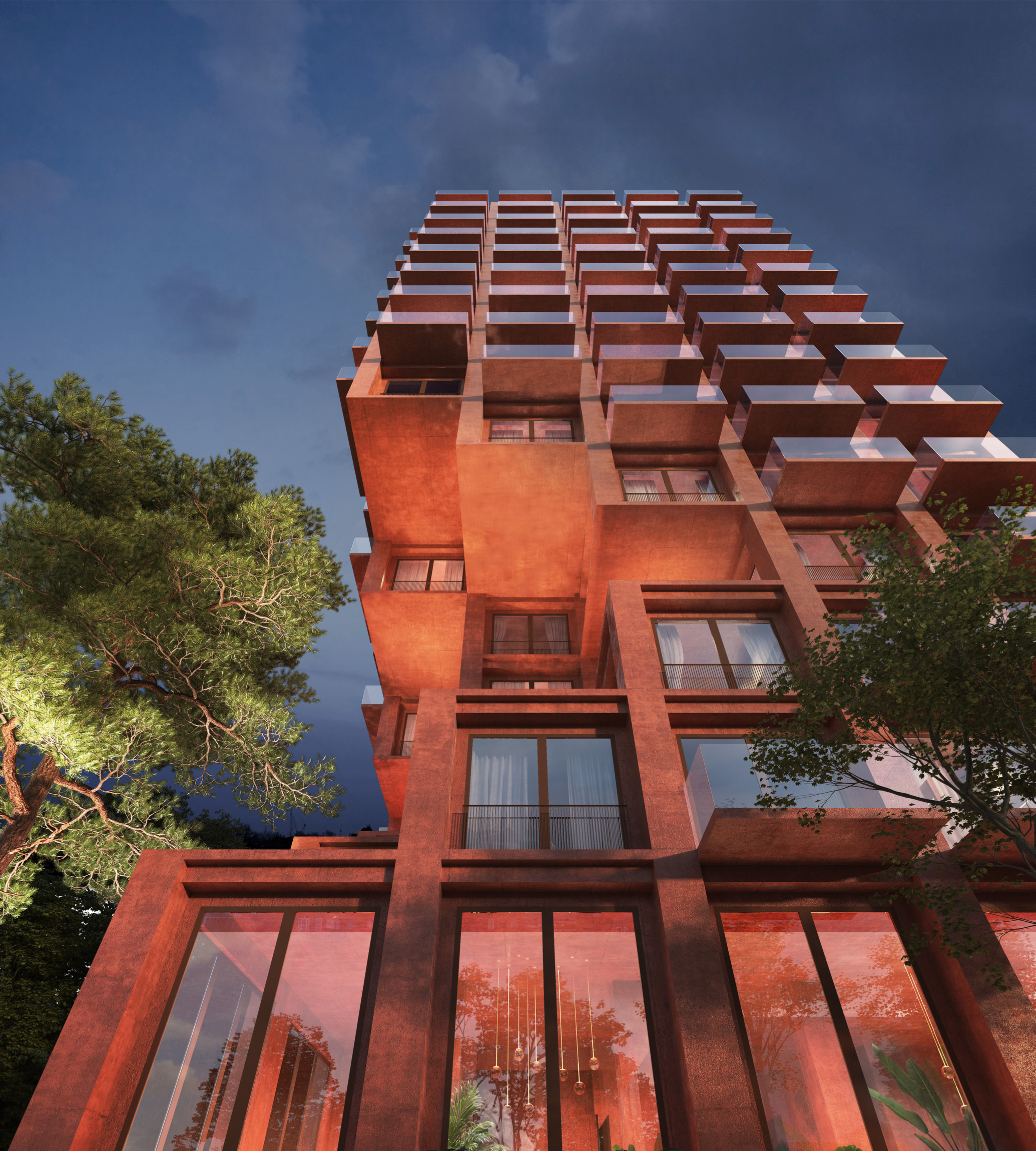
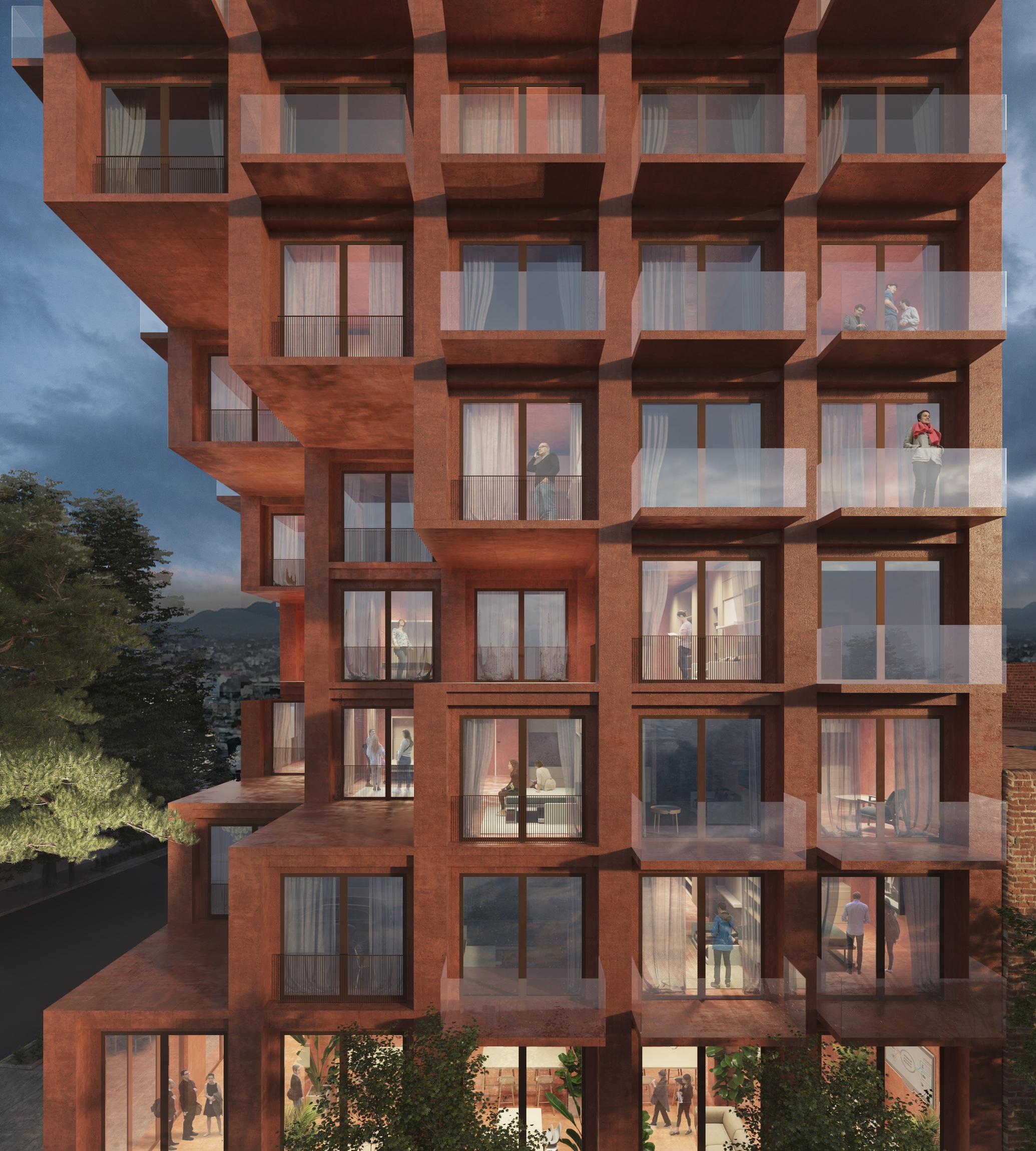
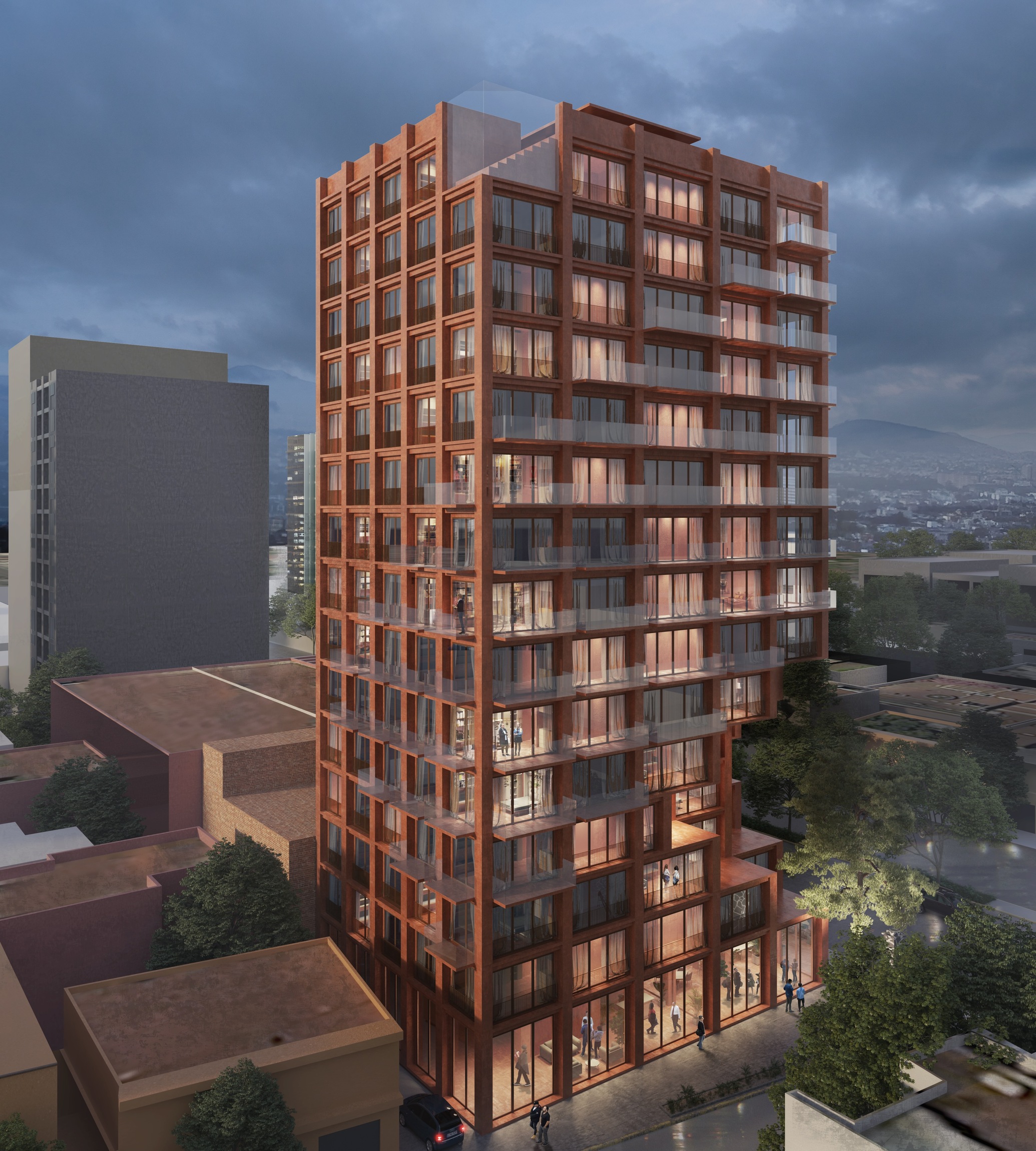
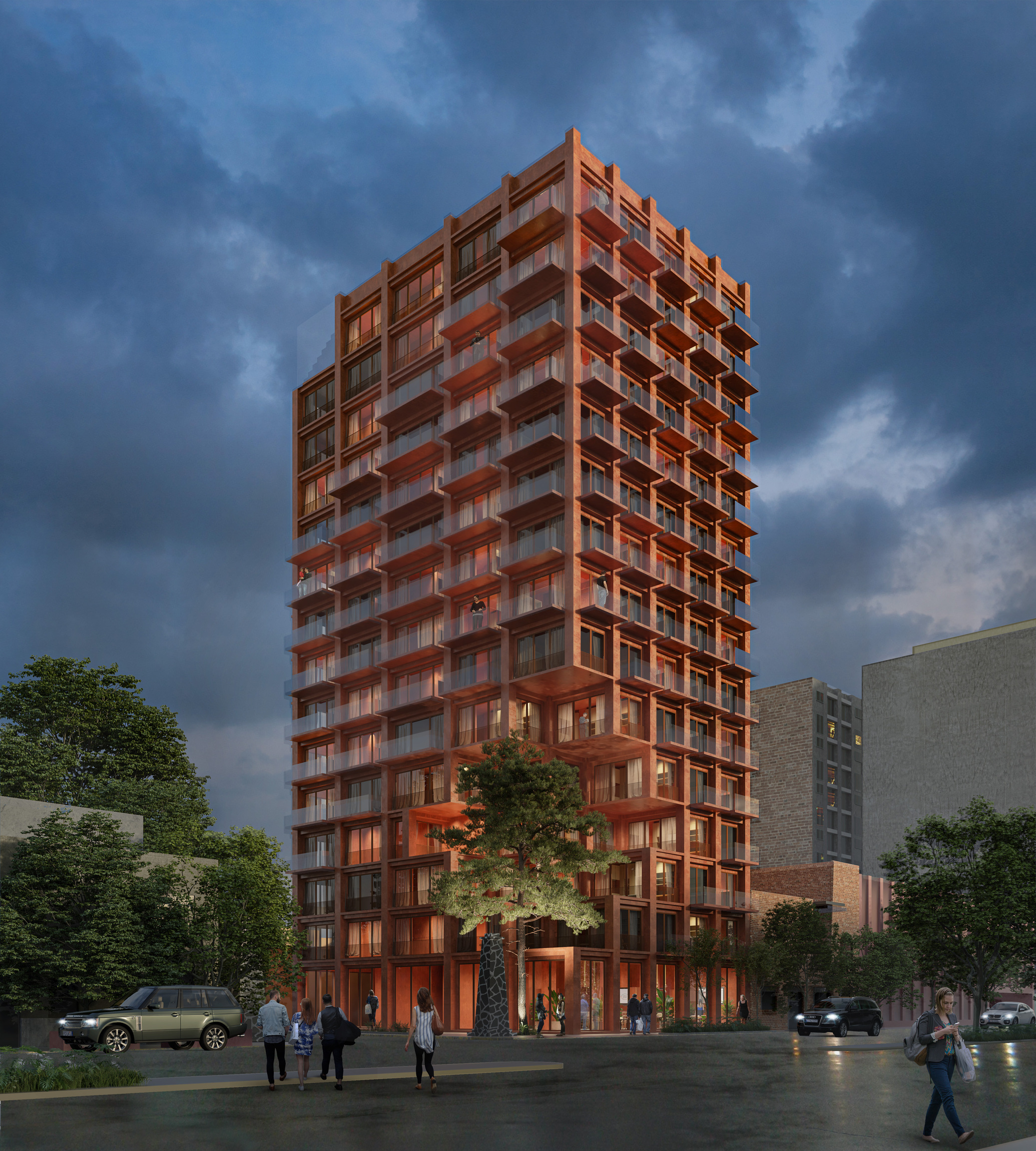

TREE TOWER
Tree Tower is located at a historically significant site—the former entrance to the Hacienda de Guadalupe, an estate that dates back to the presidency of Porfirio Díaz. In the 1960s, the land was transformed into a residential district, giving rise to what is now the Guadalupe Inn neighborhood. Tucked between two major arteries of Mexico City—Avenida Insurgentes and Avenida Revolución—this area has since become a quiet enclave, defined by leafy streets, neighborhood parks, single-family homes, small cafés, and local businesses.
In recent years, however, the skyline along Avenida Revolución has begun to shift. Changes in zoning and building regulations have catalyzed the emergence of mid-rise buildings ranging from 10 to 15 stories, subtly transforming the architectural character of the area.
Tree Tower responds to this moment of transition—not with nostalgia, nor rupture, but with synthesis.
Our proposal is rooted in a deep respect for context. The building draws inspiration from the materials, proportions, and rhythms of the original hacienda architecture, while embracing the evolving verticality and lifestyle demands of contemporary city living. In this way, the project becomes a bridge between past and future.
The façade is a visual dialogue: on one hand, it references the historical textures and warm tones of traditional construction in the area—its tectonics, colors, and repetitive symmetry. On the other, it projects forward, incorporating expansive terraces that wrap the building like a vertical garden, promoting outdoor living and a strong connection to nature—elements that define modern urban wellness. These terraces evolve and merge with reinterpretations of the French-style balconies once common in colonial and hacienda architecture, giving rise to a unique hybrid language that is both contemporary and rooted in place.
Tree Tower is not just a building—it is an urban gesture. It honors the neighborhood’s origins while offering a vision for its future, one where architecture becomes a vessel for memory, identity, and evolution.






